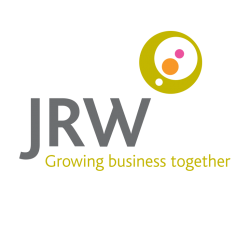THE END OF FRSSE AS WE KNOW IT
By Joanne Gibson
Firstly, let’s give FRSSE its full name of The UK Financial Reporting Standards for Smaller Entities!

As the name would suggest, FRSSE is restricted to small companies or small groups, as defined by the Companies Act 2006 and prescribes the basis for them preparing and presenting their financial statements. Its use is restricted to small companies which are not ‘ineligible’ and to entities that would meet that definition had they been incorporated under companies legislation.
The definitions are consistent with the requirements of this legislation and are the same as those required by other accounting standards (or are a simplified version of those requirements).
To be replaced by FRS 102
The FRSSE was withdrawn from 1st January 2016 and has been replaced by either:
FRS 105 The Financial Reporting Standard for the Micro-entities Regime
or
Section 1A of FRS 102 The Financial Reporting Standard.
In order to determine the accounting standard that is applicable to an entity previously within the scope of the FRSSE, detailed eligibility criteria must be referred to in the Companies Act 2006. However, size thresholds given within this guidance are as follows:
Micro entity Small entity
Turnover £632,000 £10,200,000
Balance sheet total £316,000 £5,100,000
No of employees 10 50
FRS 105 The Financial Reporting Standard applicable to the Micro-entities Regime is based on FRS 102, but adapted to reflect the simpler nature and smaller size of micro-entities and the legal requirements applying to them.
What the changeover actually means
This major change to the financial statements for medium sized company’s and the move across to FRS 102, will effectively see the end of FRSSE as we know it. For accounting periods beginning on or after 1st January 2016, the latest version of FRSSE (2015), will no longer be available and companies will need to choose between FRS102 and FRS105 (Micro Entities) as outlined above.
This will also apply to companies which shorten their period, eg 1st April 2016 to 30th September 2016 will also need to be prepared under the new rules – it’s the start date of the period and not the end date that is important.
Here are the main changes for a company currently applying FRSSE and moving to FRS102:
Share based payments
THEN
Under FRSSE, a company could merely disclose the existence of a share based payment in the notes to the accounts, such as a share option scheme.
NOW
Under FRS102, the company will now need to record share options at fair value at the date of issue, this will mean undertaking a valuation exercise.
Basic Loans
THEN
Under FRSSE, most companies will reflect basic loans at original cost with interest reflected on an accrued basis.
NOW
Under FRS102, basic loans will need to be measured at amortised cost using the effective interest rate method, that is taking into account arrangement fees and related costs that may be written off at inception. (Amortised cost is approximating the initial amount of the loan by a market rate of interest).
Holiday pay
THEN
Under FRSSE, there was no mention of Holiday Pay and as a result not generally accounted for by companies.
NOW
Under FRS 102, companies must make a provision for the cost of any untaken holiday entitlement at the year end.
Deferred tax
THEN
Under FRSSE, deferred tax was only provided on timing differences.
NOW
Under FRS 102, deferred tax is required to be provided on revaluations and rolled over gains and on differences between fair and tax written down values on the acquisition of a business.
Investment properties
THEN
Under FRSSE, investment properties had to be revalued to their market value through the revaluation reserve.
NOW
Under FRS102, these will be carried at fair or market value with the adjustment through the profit and loss account. It will therefore form part of the accumulated profit and loss reserves, but will be non-distributable.
Conclusion
Any company adopting FRS102 for the first time will be required to retrospectively restate its accounts as if the new rules had always applied (with a few exceptions).
This will mean restating the following:
• The opening balance sheet at the start of the first year in which FRS102 applied.
• The profit and loss account for the comparative period.
• The opening balance sheet at the start of the comparative period (known as the transition date).
As you can see, the changeover from FRSSE to FRS 102 will undoubtedly present challenges for business owners but the team at JRW are here to make the process as easy as possible for you.
